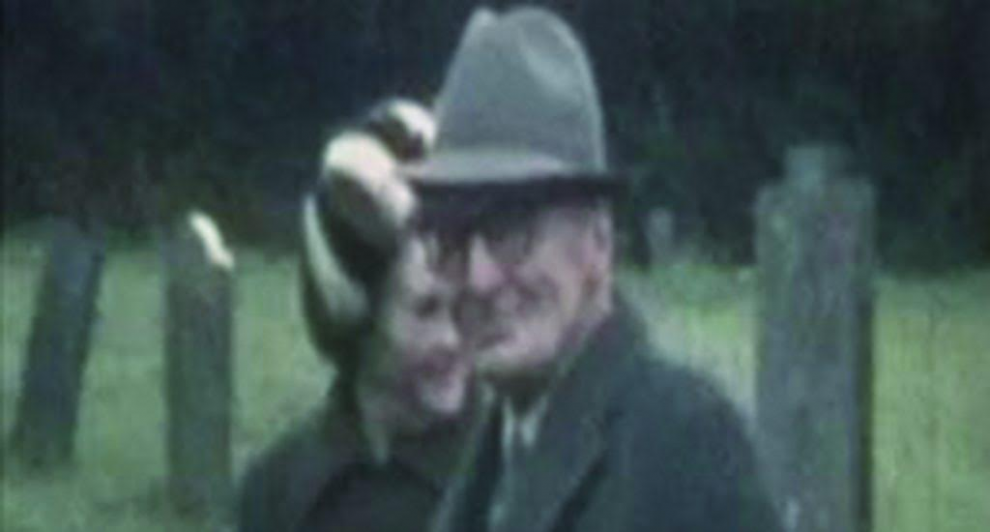DYFED POWYS POLICE has commenced a forensic review of material held in connection with the deaths of siblings Martha and Griff Thomas at Ffynnon Samson, Llangolman in 1976. The original inquest in 1977 found that Martha was unlawfully killed, whilst an open verdict was returned on Griff.
The work to identify what material remained and feasibility of further examination, in consultation with forensic scientists, has now been completed, and based on the advice, it is thought that modern techniques can be applied to establish if additional evidence is present on a limited number of items that may be relevant to this case.
Detective Superintendent Paul Jones said: “Significant developments have been seen in forensic science over the last forty years which may provide additional information even in cases of this age. Whilst the investigation at the time (1976) was thorough, the forensic science was limited compared with today, and we will explore whether modern techniques can shed further light on the events at Ffynnon Samson in 1976.
“At this stage we don’t know what answers, if any, the forensic review will give us, but I am keeping an open mind.
“We will continue to keep the family informed of any developments.
The decision by Dyfed-Powys Police follows months of campaigning by Clebran, the local papur bro, calling for justice in the Ffynnon Samson case, and significant coverage given in The Pembrokeshire Herald to the historical murders, with a great deal of time and work being put in by Herald journalists Andy Chandler and Jon Coles.

They have both said they are delighted with the latest developments.
Hefin Wyn, Clebran’s editor told Herald.wales: “By announcing their intention to examine whatever has been kept from the investigation in 1976 with modern day forensic technology they have shown they take seriously the viewpoint constantly made by Clebran hat the verdict in the inquest into Martha and Gruff Thomas’ deaths remains unsafe.
“We have discussed the contents of the original police report submitted to the inquest with several experienced ex-policemen, who have been involved in solving serious crimes, and they are of the opinion there are obvious questions that need to be asked regarding the nature of the original investigation.”
Mr Wyn added: “We look forward to the police findings under the direction of Detective Superintendent Paul Jones and at the same time we call upon Dyfed-Powys Police to support our campaign to reopen the inquest. They have not divulged what exactly has been kept nor have they divulged what has not been kept from the scene of the crime.
The Police file that went walkabout
DURING 2021, The Herald reported on a controversial case in which an elderly and significantly disabled man was accused of murdering his elderly sister.
It was a quarter-to-nine in the morning on Saturday, December 11, 1976
The postman delivering letters to Ffynnon Samson Farm near the village of Llangolman notices the occupants hadn’t collected the letters he’d dropped off two days earlier.
Concerned about the welfare of the elderly brother and sister – Griff and Patti Thomas – he enters the house.
In the living room, he finds Patti Thomas’s body.
Her head is covered in blood.
A television – still switched on – is on its side near her corpse.
In the kitchen, he finds the remains of her brother, Griff.
Mr Thomas’s body was severely charred, partly consumed by fire.
A police inquiry takes place into the deaths.
At an inquest the following year, guided by a report from the senior investigating officer, Detective Chief Superintendent Pat Molloy, an inquest delivers its verdict.
It finds Mr Thomas had killed his sister and then died in circumstances which the Police could not determine.
FITTING THE FRAME
The subsequent report to HM Coroner is a masterpiece of fitting evidence into a frame and trimming out the awkward bits that don’t fit the picture the painter wants to show.
Unable to discern any other motive for the killing, Pat Molloy concluded Mr Thomas killed his sister and then mysteriously died.
That’s less a patchwork quilt of evidence forming a coherent whole and more like Swiss cheese, full of holes.
Griff Thomas had debilitating arthritis. He suffered with it in his back, arms and, most tellingly, his left hand.
Had Pat Molloy been thorough, he would’ve noted that Mr Thomas’s arthritis was so severe in his left hand that he could not form a grip with it.
Villagers and relatives recall how bad Mr Thomas’s left hand was.
He could not turn the hymnal pages in the local church he and his sister attended.
He could barely use the gear shift in his car.
His back problem was severe enough to impair his mobility.
But DCS Molloy concludes that a seventy-three-year-old with such disabilities lifted a heavy chair and used it to beat his sister to death before moving her body from the kitchen to the living room.
Pat Molloy doesn’t even attempt to explain how the television next to Miss Thomas’s body was toppled over if the deadly assault occurred in the kitchen.
Furthermore, in the house’s kitchen was a sewing machine.
The body of the sewing machine was coated in Mr Thomas’ blood. But someone had replaced its cover.
Not only does DCS Molloy not explain how Mr Thomas’ blood came to be on the outside of the sewing machine, but he also doesn’t account for the circumstances in which Griff Thomas carefully replaced the cover leaving only a solitary thumbprint behind.
According to the report to the Coroner, Police officers carried out extensive fingerprinting of the house and lifted 400 different prints.
All but two could be accounted for: a blood-stained fingerprint on a picture in the living room and a second blood-stained fingerprint on the sewing machine cover.
Both fingerprints come from the thumb of a left hand.
We have already discussed Griff Thomas’s problems with his left hand and the evidence of those who knew him best regarding them.
To assert that the thumbprints belong to Griff Thomas, Mr Molloy argues from absence.
He claims no way existed to establish whether the thumbprint came from Griff Thomas because Mr Thomas’s left hand was one of his body parts consumed by the fire that damaged his corpse.
But the Police examined 398 other fingerprints in the house.
Having found two left thumbprints in areas associated with the crime, it beggars belief there were no other left-hand thumbprints elsewhere in the house to which the Police could match the rogue prints.
For example, in Griff Thomas’s bedroom, on his possessions, in his car, and on household furniture.
Mr Thomas would’ve needed a remarkable presence of mind to wipe his left thumbprints from every other shred of potential physical evidence.
THE REQUEST FOR INFORMATION
In April 2021, we asked Dyfed Powys Police for access to the material concerning the Llangolman case under the Freedom of Information Act.
The case was long closed, but material relating to it had supposedly been re-examined by detectives investigating a tenuous link to John Cooper.
After considerable delay, the Force confirmed it held the information we requested.
It continued: “Although the majority of information/material is held in a central location, some information/material may be held in a storage facility.
“Therefore, to answer your request fully, Dyfed Powys Police would need to complete a search of that storage facility for documents/materials relevant to your request.
“Due to the amount of information contained within that storage facility it has been estimated that it would take 4 trained police officers 40 hours per officer to systematically search and review information/material for relevance to your request.”
When we limited that request to those documents held only in “a central location”, the FoI team rejected our request as unduly burdensome to meet.
We now welcome the news that Dyfed Powys Police is re-examining the case after pressure from the local community, The Herald, and papur bro “Clebran”.

















